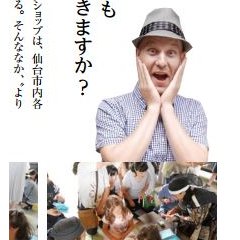It's been three years since the Great East Japan Earthquake and there are mixed emotions in the air. Some cry construction ties with government is slowing reconstruction, while others are angry money is not going where it needs to. There are huge problems still to solve such as cleaning up the nuclear crisis of Fukushima, finding permanent living areas and work for those still in temporary housing, and too many other things to discuss in this article. The reality is people suffered and communities were destroyed. There are many organizations and individuals helping recovery efforts in their own way, but often those ravaged by the tsunami along the coast outside Sendai want one thing above else: to not be forgotten.
We can all sympathize with that. Take a moment to reflect and be grateful you are alive.
To see the tsunami affected areas, your best bet is to rent a car. The privacy and freedom of driving means you won't need to worry about any emotions in front of strangers on buses or in tour groups and you can spend as long as you would like at the locations you choose. Renting a car is easy as there are many places to do so located around JR Sendai Station. You can ask at the tourist center inside the station to help you find one or make a reservation. I ended up going to several car rental locations as many were already booked in advance since it was a weekend. Prices range as low as 2500 yen to as high as 8000 yen. Do shop around and highly consider making a reservation in advance if you can. After you have the keys, it is time to drive.
While you could drive an hour and half all the way to Ishinomaki, often referred to as the city most damaged by the great wave, a much more viable option is to drive just 25 minutes to the coastline outside the city. The drive is easy and mostly consists of one long straight road. Use your car navigation or ask any local for directions should you get lost. Being three years after that day you won't see debris such as the famous images of piled cars, landscapes of garbage, or the massive fishing boats that washed ashore. There has been progress. The manpower of construction crews, the Japanese self defense force, and countless volunteers with the more than almost two dozen round the clock incinerators built specifically for removing debris have cleaned up with incredible efficiency. The next seven years are dedicated to construction and recovery of citizens' livelihoods and communities.
On my drive I first went to Gamo, an area not far from the Sendai Kirin Beer Factory which was also heavily damaged but has since recovered. At Gamo you can walk the sandy beaches, seeing the trees that remain bent from the rush of water that came from the horizon. I also saw surfers there despite the windy day. Drive a few more minutes south and all around is flat. You'll see cement foundations where houses once stood and I even saw the odd personal item such as a brush or even a washing machine left behind. You realize very quickly people lived here. I thought, "What were they doing when the earthquake and tsunami hit?" Surprisingly, basically all areas are open access. You can freely drive through the streets and walk through the remains. Continuing along the coast I took some pictures of houses that have partially stood strong, but in no way are livable. One house was missing its entire first floor. Another I could look inside through a missing wall and saw where the family alter once stood. Although not blocked or taped off, do not go into any remaining structures for your safety and to show respect.
There are two places you must check out. The first is Arahama where people escaped to an elementary school, a Buddhist statue was erected as a place to pray, and there is an area to see pictures of the town before and during the tsunami. There are many house foundations and some debris still in the area. The second place of interest is Yuriage where you can visit a shrine on a man-made hill and view a memorial at the local middle school which may bring you to tears.
Although there are signs of hope in community projects, volunteering, and a slow return to normalcy for some, there is still much to be done. Experiencing the affected areas for yourself then sharing your thoughts, and the mere act of visiting Tohoku to increase tourism deserve many thank you's from its citizens and those like me that now call this area home. Thank you from Tohoku for remembering us.































